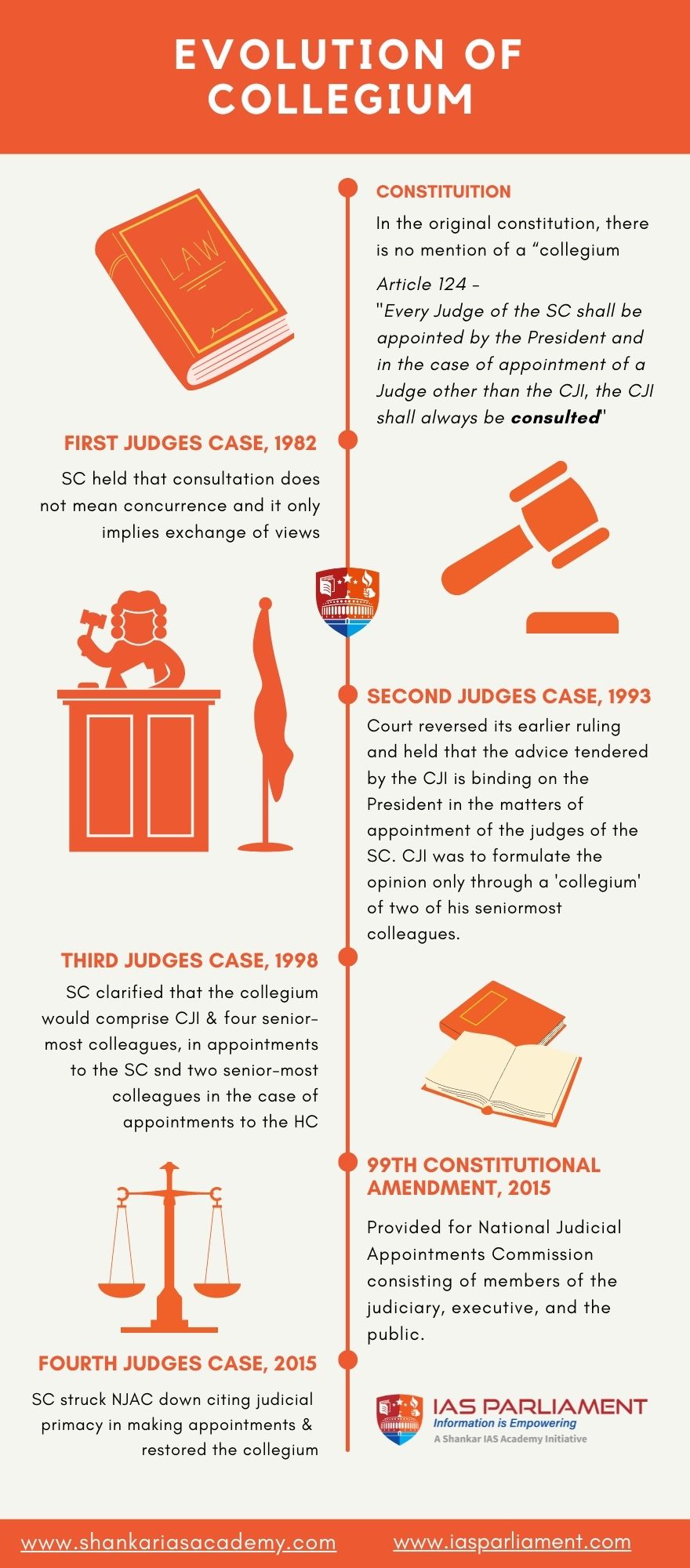900 319 0030
enquiry@shankarias.in
The collegium system has been of late in news for tussles between the judiciary and the executive and the slow pace of judicial appointments.
The procedure for the appointment of judges to the Supreme Court and various High Courts are laid in the Memorandum of Procedure (MoP).

References
Quick facts
The Memorandum of Procedure (MoP)